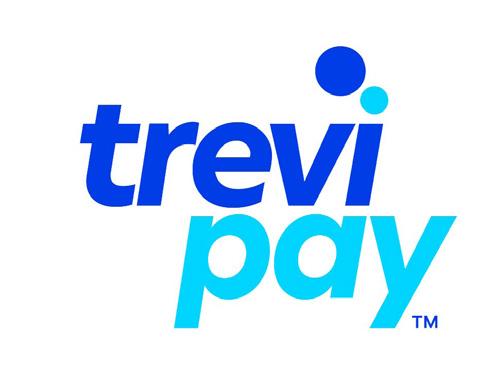THE PAYMENT PUZZLE






Launch faster, simplify payments, and scale your business with a single, flexible platform.
EDITOR’S
Ekaterina
Sarel

Brice van de Walle, Executive Vice President, Core Payments Europe, Mastercard
Melinda Roylett, Managing Director,
SCALING WITH PURPOSE: HOW ING IS ENGINEERING THE FUTURE WITH GENERATIVE AI Bahadir Yilmaz, ING Chief Analytics Officer
THE WOMEN SHAPING FINTECH’S FUTURE
Melissa Donohue, Chief Product Officer, XYB
James Neville, CEO and co-founder, Yaspa
LIFE AFTER THE ISO 20022 FOR CBPR+ DEADLINE: A STRATEGIC OPPORTUNITY FOR FINANCIAL INSTITUTIONS
Andy Turner, Director, Global Head of Financial Messaging Product Management, Finastra
EIDS ARE COMING – A COLLABORATIVE APPROACH WITH FINTECH IS KEY TO EASING ADOPTION
Jarek Sygitowicz, Co-Founder and Chief Strategy Officer, Authologic
BUILDING A SMARTER PAYMENT ECOSYSTEM –WHY SOVEREIGNTY IS CENTRAL TO INNOVATION AND SECURITY
Barnabas Ferencczi, Head of Strategy & Marketing –PayTech Business, G+D
INSIDE THE INVESTOR’S MIND: SCALING, AI, AND THE NEXT WAVE OF FINTECH
Steve Lemon, Partner, Volution

AIRWALLEX ON AI-DRIVEN GLOBAL PAYMENTS
Simon Ellis, Head of Operations for EMEA, Airwallex
BUILDING BRIDGES: UNLOCKING EMERGING MARKET GROWTH WITH PAYFUTURE


DISCLAIMER
While every effort has been made to ensure the accuracy of the information contained in this publication, neither FinTech BoostUP nor its contributors accept any responsibility for errors, omissions, or the views expressed. The content is provided for informational purposes only and does not constitute professional, financial, or investment advice. FinTech BoostUP is registered in England and Wales under company number 15797833. Registered address: 69 Lea Hall Green, Birmingham, England, B20 2AY
ACKNOWLEDGEMENTS
We’d like to thank the following brands that have helped make this edition of FinTech BoostUP Magazine possible: IXOPAY, TreviPay, Rapyd, Mastercard, Lloyds Bank Merchant Services, Yaspa, Finastra, Autologic, G+D (Giesecke+Devrient), and others. Your thought leadership and contributions are helping drive the future of fintech, and we’re proud to showcase your innovations within this publication.
EDITORIAL & PRODUCTION TEAM
Publisher & Founder: Ekaterina (aka Katherine) Emirosan
Contributing Editor: Jennifer McShane
Content & Relationship Manager: Esmira Saudkasova
Designer: Alexander Svistakov
Content Team: news@fintechboostup.com
IN THE WAKE OF DISRUPTION, OPPORTUNITY RISES

FinTech BoostUP was born from a clear but powerful idea: to spotlight the technologies, talent, and transformations reshaping the financial services industry. Our mission is to connect fintech founders, investors, regulators and enablers with the insight and visibility they need to scale – clearly, confidently and with purpose.
This year’s Money20 / 20 Europe unfolds against a backdrop of deep uncertainty. Geopolitical tensions, economic recalibration and tightening immigration controls are already affecting the sector. As Zennon Kapron recently wrote in Forbes1, policy turbulence is distorting supply chain finance, limiting cross-border liquidity and restricting the flow of global talent; the very fuel that drives innovation.
Yet even in this environment, there are signs of momentum.
Across Europe, the push for financial sovereignty is gaining ground. The European Payments Initiative (EPI) and frameworks such as eIDAS 2.0 are forming the foundations of a more unified and resilient financial infrastructure. While IPOs and exits have slowed globally, we see ambitious examples of what’s still possible. eToro raised $403 million in its May 2025 Nasdaq debut and is now exploring a dual listing in Abu Dhabi or London. That move suggests the centre of gravity is shifting. Nasdaq no longer holds a monopoly as the platform for scaling. Companies like Klarna and Chime are also preparing to enter public markets. There is caution, yes, but there is also renewed energy.
At FinTech BoostUP, we believe exit conditions are not a luxury. They are essential to any thriving ecosystem. Without them, capital recycles more slowly. Innovation stalls.
Today, only 0.9% of Germany’s workforce is employed by startups2. In Sweden, it’s 2.1%. In the United States, it’s 8.4%. Less than a third of European start-ups are based in its four leading hubs, London, Paris, Berlin and Stockholm, compared to more than half
1 www.forbes.com/sites/zennonkapron/2025/04/16/trump-tariffs-and-fintech
in the U. S. and while 50% of VC-backed start-ups in the States became unicorns between 2009 and 2019, only 14% did in Europe3
These gaps aren’t just statistical. They’re structural. They reflect the urgent need for deeper capital markets, more accessible IPO paths and policies designed with exits in mind.
The global start-up map is already beginning to shift. In 2025, Central Asia, East Asia and the Middle East posted the highest sub-regional growth rates. China saw the most substantial4 national growth among the top 35 countries, while the U. S. recorded the lowest among the top 50. Its influence is still enormous, but its dominance is no longer absolute.
The EU has a rare opportunity to lead this next wave of fintech growth, if it can build on current progress and deepen regulatory harmonisation. The UK remains a fintech powerhouse, ranked second globally, but it faces its own challenge: expanding beyond London. While the capital continues to outperform, the number of UK cities in the global top 1,000 has declined three years in a row.
What’s needed now is coordinated action – more late-stage capital, a modernised IPO infrastructure, alignment between pension systems and long-term tech investment, and policies that make scale possible outside a single city.
This is where FinTech BoostUP comes in. We are more than a platform. We are a catalyst, an amplifier and a connector for fintech’s next generation. Our Expert Insight series features voices pushing the industry forward: James Neville at Yaspa, merging AI and open banking to restore trust; Brice van de Walle at Mastercard, exploring tokenisation and agentic commerce; Brandon Spear at TreviPay and Sarel Tal at Rapyd, transforming B2B payments; Brady Harris at IXOPAY, simplifying payment architecture to unlock scale. We also explore what’s top of mind for investors with Steve Lemon, Partner at Volution, who shares his view on the critical growth phase for start-ups – and how the right VC backing and GP expertise can transform risk into successful exits. We speak with Airwallex following their recent $300 million fundraising round to understand the real challenges of scaling and how new capital is fueling global expansion. We also spotlight the voices of Women in FinTech, featuring Melissa Donohue, Chief Product Officer at XYB, who shares her journey in building adaptive financial infrastructure.
As this year’s Money20 / 20 Europe explores uncertainty, growth and valuation, we ask: what will it take to bring IPOs back to Amsterdam, Frankfurt and London? How can AI, tokenisation and digital identity accelerate trust and inclusion? And how do we move from fragmented national policy to a coordinated global outlook?
Looking ahead, our upcoming editions will cover Sibos 2025 and dive into what international banks and financial institutions are prioritising as they rebuild existing platforms to boost efficiency. We’ll explore how AI agents can accelerate operations, the rise of RegTech in combatting fraud and financial crime, and more.
To all of you building, investing, and imagining what comes next – may your partnerships be bold, and your strategies future-ready.
Let’s make the invisible, visible.
By Ekaterina (aka Katherine) Emirosan and Editorial Team
2 www.rolandberger.com/en/Insights/Publications/Startups-could-create-almost-4-million-jobs-in-Germany-by-2030.html
3 dealroom.co/blog/the-economic-engine-of-startups-using-data-to-fuel-startup-ecosystems
4 www.mckinsey.com/industries/technology-media-and-telecommunications/our-insights/europes-start-up-ecosystem-heating-up-but-still-facing-challenges







TRENDING NEWS
Payments
Tribe and Finmo Team Up to Bridge Europe–Asia Payments
Tribe and Finmo have joined forces to deliver integrated card issuing, treasury, and local settlement solutions across APAC and Europe. The partnership merges Tribe’s issuer/acquirer processing with Finmo’s fast-scaling treasury platform licensed in 180 countries. It marks a key milestone in Tribe’s APAC expansion following the launch of its Singapore HQ in October 2024. Finmo gains access to European markets, while Tribe strengthens its local footprint across Asia.
Date: May 29, 2025 Websites: tribepayments.com, finmo.com
MuchBetter Rolls Out Corporate Card for Fintechs
MuchBetter’s new prepaid Mastercard offers virtual issuance, merchant controls, and real-time budget tracking—tailored for fintechs and scaleups.
The introduction of this new product marks an expansion in the B2B unit of MuchBetter beyond the consumer wallet space, marking a significant milestone in its evolution as a comprehensive financial services provider.
Date: May 15, 2025 Website: muchbetter.com
Banking Circle and Visa Direct Partner for Faster Global Payments
Banking Circle enables Visa Direct to access global clearing rails via a single API,
improving speed and costefficiency for cross-border payments.Through this new partnership, Visa Direct will leverage Banking Circle’s single API technology to gain access to multiple direct and local clearing rails via a single, secure, and trusted provider.
Date: May 23, 2025 Website: bankingcircle.com
Raiffeisen Bank Integrates Wise for Instant CEE Transfers
Raiffeisen adopts Wise Platform across 11 CEE markets to enable real-time multi-currency payments directly from digital banking channels. Raiffeisen Bank’s enhanced offering, powered by Wise’s robust infrastructure, will be available to customers directly from their existing Raiffeisen accounts.
Date: May 14, 2025 Website: wise.com
Digital Banking
TransferGo and Griffin Launch GBP Wallets for UK SMEs
TransferGo introduces FSCS-protected wallets and savings, backed by Griffin, enhancing capital management for UK businesses.
Addressing the problems of high fees, slow transfers, and complex processes in global money movement, TransferGo’s multi-currency business accounts feature Griffin-powered GBP wallets to ensure customer funds are safeguarded. In addition to this, the new easy access savings accounts now give TransferGo’s business customers access to competitive interest rates on their working capital, helping them turn idle funds into
revenue without compromising liquidity. These accounts come with FSCS protection of up to £85,000 of eligible deposits per depositor.
Date: May 15, 2025 Website: transfergo.com
bunq Brings Crypto Investing to Its Secure Banking App
bunq, the second largest neobank in Europe, today launched bunq Crypto, empowering its users to safely and effortlessly invest in the cryptocurrency market. Starting today, users in the Netherlands, France, Spain, Ireland, Italy, and Belgium can begin their crypto investing journey right in the bunq app. The challenger plans to gradually expand bunq Crypto to the rest of the European Economic Area, as well as the US and the UK where it has previously applied for licenses to operate.
Date: April 30, 2025 Website: bunq.com
RegTech & Compliance
Enfuce Launches Fortitude Pledge to Tackle Financial Crime
Enfuce commits to screening 100% of high-risk transactions and delivers company-wide AML/CTF training to set a new ethical benchmark. In alignment with UN Sustainable Development Goal 16 (SDG 16), the pledge goes beyond compliance and raises awareness on the impact of human trafficking, money laundering, and terrorist financing.
The Fortitude Pledge reinforces Enfuce’s position as a leader in fraud prevention and
compliance, and underscores its mission to advance ESG in the payment space.
Date: May 13, 2025 Website: enfuce.com
Payabl. adopts Sift’s AI Fraud Platform to Safeguard Businesses
payabl., a leading European fintech provider, has partnered with Sift to integrate AIpowered, real-time fraud prevention into its platform. This collaboration enables merchants to reduce chargebacks, improve approval rates, and boost conversions— while maintaining a seamless customer experience and enhancing TRA exemption eligibility across the EEA and UK.
Date: May 7, 2025 Website: payabl.com, sift.com
M&A Deals
Equals Money and Railsr Merge to Forge a New Era in Embedded Finance
Equals Money and Railsr have officially combined forces, marking a significant milestone in the evolution of embedded finance. This strategic merger brings together two fintech innovators to create a more substantial, dynamic, and prominent financial services provider. Together, they are positioned to deliver a nextgeneration financial services platform that empowers businesses worldwide with a more comprehensive and innovative offering, allowing them to reach new verticals and audiences.
Date: April 30, 2025 Website: equalsmoney.com, railsr.com
FUNDRAISING STORIES
Dojo Secures $190M to Expand Across Europe
UK-based payments fintech Dojo raised $190 million from Vitruvian Partners to accelerate its growth in the UK, Spain, Ireland, and Italy. The company plans to enhance its smart payment terminals and merchant services as it expands across European markets.
Date: May 28, 2025
Investors: Vitruvian Partners Website: dojo.tech
Dhan Nears $200M Funding Round, Approaches Unicorn Status
Indian investment platform Dhan is finalizing a $190–$200 million round led by ChrysCapital, with participation from Alpha Wave, MUFG, and others. The funding will help Dhan scale its direct-to-investor platform, which offers equity, ETF, and futures trading tools for India’s growing retail investor base.
Date: May 28, 2025
Investors: ChrysCapital, Alpha Wave, MUFG, Bharti Group, Harsh Jain Website: dhan.co
Slash Raises $41M
Series B, Reaching $370M Valuation
U.S.-based business banking platform Slash has raised $41 million in a new funding round, bringing its total capital raised to $60 million and valuing the company at $370 million. The company has rapidly emerged as one of the fastest-growing corporate card providers in the U.S., with annualized card spend exceeding $3 billion. Slash’s products are gaining traction among digital-first businesses, including agencies, affiliates, crypto firms, and contractors.
Date: May 24, 2025
Investors: Goodwater Capital, NEA, Menlo Ventures Website: slashfi.com
Airwallex Raises $300M Series F, Valuation Hits $6.2B
Global payments giant Airwallex secured $300 million in Series F funding, bringing its total
capital raised to over $1.2 billion and boosting its valuation to $6.2 billion. The company will use the funds to expand its international financial infrastructure, including card issuing, multi-currency wallets, and API-based payments.
Date: May 21, 2025
Investors: DST Global, Visa Ventures, Salesforce Ventures, and others Website: airwallex.com
Finom Raises €92.3M to Scale Across Eurozone
Amsterdam-based SMB banking platform Finom secured €92.3 million to accelerate its presence across the Eurozone by the end of 2025. The funds will be used to enhance its invoicing,
business account, and expense management solutions tailored for freelancers and small businesses.
Date: May 7, 2025
Investors: General Catalyst Website: finom.co
Visa Ventures Backs
Stablecoin Startup BVNK
Global stablecoin infrastructure platform BVNK has received a strategic investment from Visa, building on its $50 million Series B round in December 2024. The earlier round was led by Haun Ventures, with participation from Coinbase Ventures, Scribble Ventures, DRW Venture Capital, Avenir, and Tiger Global. The investment further strengthens BVNK’s mission to power global payments using stablecoins and digital asset infrastructure.
Date: May 6, 2025
Investors: Visa, Haun Ventures, Coinbase Ventures, Scribble Ventures, DRW Venture Capital, Avenir, Tiger Global Website: bvnk.com
THE PAYMENT PUZZLE

Brady Harris, CEO of IXOPAY, on how merchants are cutting through complexity with orchestration and smarter payment technology
In today’s fast-moving digital economy, payments have evolved from a backoffice necessity into a strategic function – and often, a competitive differentiator. With the rise of e-commerce and the explosion of new payment methods, merchants now face a complex web of providers, technologies, compliance rules, and rising customer expectations.
UNDERSTANDING THE PAYMENT MAZE
Today’s single digital transaction might involve authentication from one provider, routing through another, fraud screening by a third, and settlement via a fourth. This layered approach brings powerful capabilities, but also introduces challenges: siloed data, inconsistent customer experiences, high development costs, and operational complexity. These issues are especially painful for developers. A 451 Research study shows that 64% of merchants with over 1,000 employees believe reducing developer time spent on payments is a top business priority. Faced with mounting complexity, many companies are rethinking their strategies. Should they commit to a single provider, build their own system, or adopt a more flexible orchestration model?
ONE PROVIDER TO RULE THEM ALL?
For smaller or early-stage merchants, an all-in-one PSP (payment service provider) offers a fast route to market. With

a single integration and bundled features, it simplifies payment operations – ideal for businesses with limited resources or straightforward needs.
However, as merchants grow, especially across borders or channels, the limits of this model become clear. Allin-one PSPs may lack advanced routing, support for local payment methods, or deep performance insights. While useful for basic scenarios, they may fall short for high-growth or international businesses.
WHY GO MULTI-PROCESSOR?
Many merchants turn to a multi-processor strategy to gain more control and boost performance. By integrating with several PSPs, they can route transactions based on geography, speed, or cost. S&P
Global reports that 56% of commerce tech leaders prefer this approach, rising to 64% among online-first businesses. The benefits? Better redundancy, higher authorisation rates, and access to local payment methods. The trade-off? Added complexity. Managing multiple providers and integrations can stretch internal teams and slow innovation.
IN-HOUSE BUILDS: CONTROL VS. COMPLEXITY
Some enterprises build their own payment infrastructure and negotiate directly with acquirers. This gives them maximum control, customisation, and fine-tuned performance – ideal for businesses with unique needs or strict compliance requirements.
But this path demands heavy resources. Ongoing development, maintenance, and regulatory compliance require serious investment. As the 451 Research data shows, nearly two-thirds of large merchants want to reduce the time their developers spend on payments, underlining the strain this approach can place on teams.
PAYMENT ORCHESTRATION: A SMARTER MIDDLE GROUND
Payment orchestration platforms have emerged as a powerful alternative to manage growing complexity. These platforms sit above the payment stack and provide a single API that connects to multiple PSPs, fraud tools, and alternative payment methods (APMs). Orchestration allows merchants to route transactions intelligently, monitor performance, and switch providers without major rework.
According to S&P Global, 66% of commerce tech leaders see orchestration as key to long-term success. Benefits include centralised control, faster onboarding of providers, more agility, and better visibility into data.
Orchestration is more than a technical solution; it positions payments as a growth driver rather than just a cost centre.
CHOOSING THE RIGHT STRATEGY
There’s no one-size-fits-all answer. The best approach depends on your company’s tech maturity, market focus, regulatory environment, and growth goals. For example, you might consider:
• All-in-one PSPs: Great for startups or simple setups.
• Multi-processor strategies: Ideal for companies needing flexibility and regional reach.
• In-house stacks: Suited to enterprises with custom needs and the resources to support them.
• Orchestration platforms: A scalable option that balances control, speed, and adaptability.
TECHNOLOGIES DRIVING OPTIMISATION
Regardless of model, several technologies are shaping the future of payments:
• Alternative Payment Methods (APMs): Tools like digital wallets, Buy Now Pay Later (BNPL), and crypto help
The essential move from fragmented to optimised payments is already in motion

improve conversion and local relevance.
• Tokenisation and Network Tokens: Enhance security and boost authorisation rates.
• Smart Routing and Retry Logic: Reduce declines with intelligent transaction handling.
• Real-Time Analytics: Deliver unified insights to refine strategy and performance.
These technologies can improve customer experience, reduce operational effort, and increase revenue when used wisely.
The essential move from fragmented to optimised payments is already in motion. As payments become central to customer experience and growth, businesses must treat payment strategy as a core function. Whether your focus is simplicity, scale, or global reach, success will hinge on building a flexible, data-driven, and resilient payment architecture. The future belongs to those who can transform complexity into clarity, and payments into a genuine strategic
64% of merchants with over 1,000 employees say reducing developer time on payments is a top priority
By Sarel Tal, VP Acquiring Partnerships, Rapyd
Retailers are going global, and they’re doing it fast. What used to be a multiyear transformation is now a quarter-long project. With e-commerce, logistics, and supply chains more accessible than ever, global expansion is no longer the preserve of the enterprise. We frequently see startups and mid-sized businesses launch internationally before they reach domestic saturation.
Retailers are moving faster than the infrastructure designed to support them. To stay relevant, acquirers and payment providers must evolve – and retailers must choose partners built for global commerce, both online and in-store.
RETAILERS ARE MOVING FASTER AND FURTHER
GLOBAL RETAIL EXPANSION IS FOR EVERYONE –BUT PAYMENTS INFRASTRUCTURE HASN’T CAUGHT UP
Ten years ago, a physical retail presence in another country came long after digital maturity at home. Today, it’s happening in parallel. Whether it’s a DTC fashion label opening shops in Europe or a food chain entering new cities across borders, global expansion is being built into the business plan from day one.
That shift brings operational complexity. A hybrid model, where a brand operates both online and with card-present transactions in new markets, multiplies payment challenges. It’s not just about collecting funds anymore. Retailers need local payment acceptance, transparent FX, unified reporting and consistent settlement mechanisms.

Global online payments are relatively straightforward to implement, while synchronising card-present and card-not-present payments across multiple countries creates deeper infrastructure challenges. Even physical retailers are rethinking payment infrastructure. Bagel Factory, a UKbased quick-service chain, adopted Rapyd’s POS and merchant services to unify payments across its locations. The result was more than just hardware at checkout. They gained centralised control over reconciliation and cash flow, enabling faster deci -
sion-making across stores. A consistent payment setup reduces operational noise. That need only grows as businesses expand regionally or internationally.
TRADITIONAL ACQUIRING WAS BUILT FOR A DIFFERENT ERA
Most acquirers are built for domestic scale. They offer card acquiring, serve their home market, and rely on bilateral relationships with banks or card schemes. That might work in one
country. But it doesn’t scale when expanding to five.
Retailers end up stitching together multiple local acquirers to cover their footprint. One for online payments in one country, another for in-store in a second, and yet another for FX or cross-border settlements. Each comes with its own onboarding, contracts, reconciliation processes and reporting tools. The result is inefficiencies, hidden costs and limited visibility into the flow of funds.
Inconsistent data formats, settlement delays and incompatible compliance workflows turn payment operations into a full-time job. Fragmentation creates friction at every level, from reconciling bank statements to forecasting cash across currencies.
The services offered are usually narrow. Traditional acquirers typically don’t support local alternative payment
ABOUT THE AUTHOR
Sarel Tal is Vice President of Acquiring Partnerships at Rapyd, the global Fintech-as-a-Service provider. Based out of Rapyd’s Amsterdam office, he leads the company’s efforts to build and expand strategic partnerships with payment facilitators (PayFacs), independent sales organizations (ISOs), ISVs and other high-opportunity partners across the world.
A seasoned payments expert and serial entrepreneur, Sarel has a proven track record of driving growth and innovation in both venture-backed scale-ups and enterprise businesses. In his role at Rapyd, he is instrumental in scaling the company’s Global Partner Programme, which empowers partners to unlock new revenue streams and deliver seamless payment experiences to their customers.
Prior to joining Rapyd, Sarel was Founder and CEO of AlgoCharge, a global fintech company specializing in next-generation AIbased payment processing technology. He also served as CEO of AllCharge, a global internet payment service provider. His deep expertise in payments and entrepreneurial leadership continues to play a pivotal role in Rapyd’s mission to enable businesses to thrive in the digital economy.
methods or digital wallets. They rarely offer currency management or flexible settlement. They also don’t operate with the APIs or transparency required to integrate easily into a modern tech stack.
RETAILERS NEED MORE THAN CARD ACQUIRING
Today’s retailers need one infrastructure, not five. They need to support customers paying with cards, wallets, bank transfers and local methods. They need to settle funds in different currencies with minimal friction. They also need real-time reporting that works across geographies and channels.
A modern acquiring and payments infrastructure must provide:
• Cards and local payment methods
• Support for local payment methods and APMs
• Cross-border payment capabilities with local acquiring
• FX and currency management
• A global ledger and consolidated reporting
It needs to do all this without adding layers of technical and operational complexity. The objective is operational clarity, not just transactional coverage.
Some PSPs have already made this shift. Alcaston Payments, a provider focused on multi-jurisdictional merchants, embraced a fintech-as-a-service model to scale. By integrating Rapyd’s platform, they gained access to global acquiring, wallet functionality and multi-currency settlement. What would’ve taken years to build internally became available through a single platform. This gave their merchants broader access without increasing operational overhead.
ACQUIRERS MUST BECOME PLATFORMS
To support global commerce, acquirers can’t just be service providers. They need to become infrastructure platforms. That means operating with cloud-native infrastructure, global payment licences and direct integrations into local networks. It also means shifting from offering products, like card acquiring, to offering capabilities. These include payments in, payouts, FX, wallets, compliance and risk.
Being a platform also means owning the tech. An API-first approach lets retailers integrate payments into their own systems instead of adapting to legacy tools. It gives them control and visibility. These are key advantages in a high-volume, multi-market environment.

Rapyd lets you build bold. Liberate global commerce with all the tools your business needs to create payment, payout and fintech experiences everywhere. From Fortune 500s to ambitious business and technology upstarts, our payments network and powerful fintech platform make it easy to pay suppliers and get paid by customers – locally or internationally.
With offices worldwide, including Tel Aviv, Dubai, London, Iceland, San Francisco, Miami, Hong Kong and Singapore, we know what it takes to make cross-border commerce as easy as being next door. Rapyd simplifies payments so you can focus on building your business.
Get the tools to grow globally and learn about our products, solutions and partner programmes at www.rapyd.net.
Follow:
Fintech-as-a-service is the model that makes this possible. Instead of building everything from scratch, acquirers can adopt embedded infrastructure to provide broader capabilities at scale. The result is faster onboarding, better cost control and more flexibility for merchants. It’s also what their customers increasingly expect. They are not just looking for a processor, but a partner that can support global growth.
PAYMENTS CAN BE AN ENABLER OR A BARRIER
Global retail is moving fast. The payments ecosystem can either keep pace or get left behind.
The acquirers and PSPs who understand this shift and who are building for global merchants with hybrid operations will be the ones who grow. The rest will stay confined to their home markets, watching the opportunity pass them by.
Retailers aren’t looking for incremental improvements. They’re looking for infrastructure that’s ready to handle scale, complexity and change. Payments needs to meet them there. It can’t wait until they’re already gone.
TOWARDS A FRICTIONLESS FUTURE: WHY 100% TOKENIZATION, CLICK TO PAY, AND PASSKEYS ARE THE FUTURE OF E-COMMERCE
The digital commerce revolution is in full swing. According to Forrester, global retail e-commerce is expected to hit $6.8 trillion and account for 24% of all retail sales by 2028. As online shopping becomes increasingly dominant, merchants are racing to optimize every aspect of the checkout experience – from speed and security to convenience and conversion.
Yet, despite the growth, cart abandonment continues to be a challenge for online businesses. According to a recent Mastercard survey, 95% of Europeans pulled the plug on an online shopping session last year when they faced friction or unwelcome surprises at checkout, from security concerns to lack of suitable payment options to just not having the right card to hand.
That’s where the combined power of tokenization, Click to Pay, and passkeys comes in. Together, these technologies are setting the stage for a checkout experience that’s not only more secure but also significantly faster and more user-friendly.
WHAT IS TOKENIZATION –AND WHY SHOULD MERCHANTS CARE?
At its core, tokenization replaces sensitive card details – like the 16-digit number on the front of your card – with a unique digital identifier, or token. This token can be used for transactions without exposing the underlying card information, significantly reducing the risk of data breaches or fraud.
But tokenization isn’t just about security. It also enables a smoother, more reliable checkout experience. By linking payment tokens to a shopper’s device or digital wallet, merchants can create

an environment where consumers are recognized instantly and allowed to pay in just a few taps – without ever manually entering their card details.
The benefits are tangible. As fraud is projected to rise from $44 billion in 2024 to $107 billion by 2029 (Juniper Research), tokenization offers merchants a crucial layer of protection. But just as importantly, it helps reduce friction at
By Brice van de Walle, Executive Vice President, Core Payments Europe, Mastercard
checkout – a major contributor to cart abandonment – and improves customer trust in the transaction.
100% TOKENIZATION
Today, many merchants already benefit from tokenization, especially those offering stored payment credentials for subscriptions or repeat purchases. However, the future lies in achieving 100% tokenization, where every transaction –whether it’s one-time, recurring, or even guest checkout – is securely tokenized from end to end.
This shift unlocks several benefits:
• Higher approval rates: At Mastercard, tokenization has been shown to improve transaction approvals by 3 to 6 percentage points. When issuers see a tokenized payment, they’re more likely to approve it due to the added security and contextual data.
• Reduced friction: Tokenized credentials can be updated automatically when a customer’s card expires or is replaced, ensuring continuity for subscriptions and stored cards.
• Increased loyalty and trust: When customers feel secure, they’re more likely to return – and spend more.
For merchants operating in highgrowth digital markets, 100% tokenization is a strategic investment in longterm revenue and customer retention.
CLICK TO PAY: THE FUTURE OF GUEST CHECKOUT
The checkout experience isn’t just about what’s stored – it’s also about how quickly and easily a customer can pay. That’s where Click to Pay enters the picture.
Click to Pay is a universal online checkout solution developed by major card networks, designed to eliminate the need for typing in card numbers, billing addresses, or passwords. Built on EMV® Secure Remote Commerce (SRC) standards, it allows shoppers to check out with a single click –across devices and browsers.
For merchants, Click to Pay complements tokenization by enabling secure guest checkout that feels just as seamless as a logged-in experience. It reduces the friction that often causes consumers to drop off before completing a purchase.
Click to Pay is designed to be future proof, with embedded support for tokenized credentials and strong customer authentication. As more merchants adopt 100% tokenization,
95% of Europeans abandon purchases when checkout is
slow, unclear, or
insecure –Mastercard survey
Click to Pay ensures that even occasional users benefit from the same fast, secure checkout experience.
PASSKEYS: THE END OF PASSWORDS
Alongside tokenization and Click to Pay, passkeys are also reshaping the future of e-commerce authentication.
Passkeys are a new form of passwordless login, backed by major tech companies. Instead of relying on a traditional password, passkeys use biometrics, like Face ID or fingerprint, to confirm a user’s identity securely.
Passkeys eliminate the need to remember and manage passwords, reducing the risk of credential-related fraud. When combined with tokenized credentials, passkeys ensure that both identity and payment are securely verified with minimal friction.
Together with tokenization and Click to Pay, passkeys allow merchants to build a fully optimized, secure, and modern checkout flow.
BUILDING A SMARTER CHECKOUT EXPERIENCE
Each of these technologies – tokenization, Click to Pay, and passkeys – delivers significant benefits on its own. But when integrated together, they create a checkout experience that is faster and more secure
For example, imagine a returning customer who:
1. Logs in using a passkey – no need to remember a password
2. Is recognized automatically via a stored token
3. Completes their purchase in one click using Click to Pay
This is the vision of the future that’s coming to life today – and it’s why merchants are moving toward full tokenization, adoption of Click to Pay, and the integration of passkey-based authentication.
Mastercard’s latest innovation, Agentic AI , takes this vision even further. With the launch of Agentic Pay, Mastercard is introducing AI-powered payment technology that enables intelligent, autonomous transactions on behalf of consumers. Tokenization plays a foundational role in this new model, ensuring that even agent-initiated payments remain secure, trusted, and frictionless. By linking tokenized credentials to AI agents, Agentic Pay delivers hyper-personalized, seamless commerce experiences.
THE NEW CHECKOUT EXPERIENCE
Digital commerce is entering a new era – one where speed, trust, and security are a must. For merchants, embracing 100% tokenization is a gateway to higher conversion rates, better customer experiences, and stronger long-term growth.
Combined with innovations like Click to Pay and passkeys, tokenization is shaping a future where checkout is no longer a hurdle, but a competitive advantage.
Merchants who invest in these technologies now won’t just reduce fraud or boost approval rates – they’ll redefine what it means to shop online in the first place.
TOMORROW’S TRANSACTIONS: HOW SMBS CAN ADAPT AND THRIVE IN THE FUTURE PAYMENTS WORLD

By Melinda Roylett, Managing Director, Lloyds Bank Merchant Services
Rapid technological advancements are driving seismic shifts in the way that businesses and their customers make payments. While the challenges of adapting to new payment innovations can seem daunting, those small and medium businesses (SMBs) that prepare for the future of payments today will be well-placed to capitalise on the immense opportunities of tomorrow.
At the recent ‘Payments Disrupted’ event hosted by Lloyds Bank Merchant Services and Visa, at The Shard in London, the future of payments came under the spotlight. The insights shared during the event underscored the importance of agility, innovation, and partnership in navigating the complexities of tomorrow’s payment landscape.
Many SMBs are now realising that staying ahead of so many emerging payment innovations is not just a matter of convenience, it’s a strategic imperative. But by embracing integrated payment solutions, challenges can be transformed into powerful new opportunities to deepen customer connections, improve operational flows, and maximise the value of every transaction.
THE CHALLENGES SMBS FACE IN A RAPIDLY EVOLVING PAYMENTS ECOSYSTEM
SMBs are no strangers to challenges. According to Lloyds’ own research, only 27% of SMBs feel confident in their omnichannel payment experience offering, leaving many at risk of falling behind customers’ changing payment needs – Lloyds found that 49% of businesses had not invested in payment solution updates at all. The good news is that these challenges can be mitigated, or even eliminated altogether, by adopting end-to-end platforms that can be easily adapted and scaled to incorporate future innovations.
And it’s crucial that SMBs start preparing now, because the rapid
pace of technological change in the payments industry is only getting faster. Looking at the 2025 World Payments Report, SMBs’ end customers now expect to pay seamlessly anywhere and everywhere, through a fast-expanding range of methods:
• Digital wallets accounted for over a third of global consumer spending in 2024 and are projected to exceed $28 trillion by 2030 as they become the default payment method at checkout, both in-store and online.
• Embedded finance and the subscription economy is booming, with 68% of digital consumers using subscriptions for content, services, or products.
• Wearable tech (smartwatches, rings, and even clothing-integrated payment chips) and biometric payments are gaining traction, replacing passwords and PINs.
• Buy-Now-Pay-Later (BNPL) has disrupted traditional credit models, and is projected to reach $580 billion by 2030.
• According to Visa data, UK realtime account-to-account (A2A) payment volumes are forecast to grow at 14% per annum each year from 2023 to 2027, enabling instant, low-cost transactions.
THE FUTURE OF PAYMENTS: TRENDS AND OPPORTUNITIES FOR SMBS
Of course, no discussion about the future of payments can ignore the growing influence of artificial intelligence in payments, touching everything from fraud detection to payment personalisation and customised checkout experiences based on buyers’ behaviour.
As Ryan Heaphy, VP of Global Strategic Relationships at Epos Now, highlighted during the ‘Payments Disrupted’ event: “AI-powered tools can provide SMBs with actionable insights into cashflow, pricing strategies, and customer behaviour, without requiring in-house data science expertise. This democratisation of technology is a game-changer for SMBs, enabling them to compete on a more level playing field with larger enterprises.”
Blockchain technology is another area of immense potential. Blockchain could play a key role in identity solutions, enabling decentralised commerce and giving consumers greater control over their personal data. This could lead to more secure and transparent payment processes, reducing fraud and building customer trust.
Open Banking is also set to reshape the payments landscape. By enabling greater interoperability between financial institutions, Open Banking allows businesses to offer more flexible and integrated payment solutions. This framework facilitates the development of innovative services, such as real-time payments and personalised financial products, which can help SMBs stay competitive in a rapidly evolving market.
There’s also a massive opportunity for SMBs to streamline their own B2B payment processes with virtual cards, which offer real-time issuance, singleuse capabilities, and various spend management controls. Virtual cards are seen as enablers for embedded payments, allowing small businesses to pay within their preferred systems like accounting platforms or enterprise resource planning (ERP) platforms.
Blockchain could play a key role in identity solutions
ACTIONABLE STEPS FOR SMBS
By embracing these payment innovations, SMBs can future-proof their businesses and enhance customer experience, security, and operational efficiency. Integrated payment solutions can offer the most cost-effective and streamlined way for busy SMBs to adopt new methods with ease, enabling them to:
• Embrace digital wallets: By integrating popular digital wallets like Apple Pay and Google Pay into your payment systems, customers can make tap-to-pay and QR code contactless payments, and online payments secured by PCI DSS, end-to-end data encryption and tokenisation.
• Optimise checkouts for mobile: SMBs can optimise their website and checkout processes for mobile devices, and also implement mobile payment solutions like Near Field Communication (NFC) for contactless payments in-store.
• Leverage real-time payments: If SMBs are operating in markets with real-time payment systems, they can highlight the speed and convenience of A2A payments to their customers –and also benefit from instant funds settlement to boost cashflow management.
• Build a buffer against fraud: As digital payments grow, so do security risks. SMBs can deploy advanced fraud detection systems to protect customer data. With integrated solutions from expert providers, SMBs can also ensure compliance with payment security standards like PCI DSS.
• Maximise the value of data: The future of payments will be shaped by greater personalisation, with consumers expecting tailored payment experiences. SMBs can use customer data to offer personalised payment options, such as preferred payment methods or instalment plans, or create loyalty programmes or rewards tied to payment methods to encourage repeat business.
CONCLUSION: EMBRACE DIGITAL TRANSFORMATION TO STAY COMPETITIVE IN THE FUTURE
The future of payments is increasingly digital, and brimming with opportunities for SMBs that are willing to adapt. For SMBs wanting to give their customers the best payment experiences, this means investing in scalable payment solutions that can adapt to evolving technologies and consumer preferences.
Lloyds Bank Merchant Services offers a range of integrated payment solutions that span in-store POS and omnichannel acceptance. These solutions not only streamline payment processes but also provide businesses with data-driven insights that can inform strategic decision-making. This is particularly important for SMBs with seasonal revenue streams, as it allows them to manage cash flow more effectively. Lloyds’ Merchant Cash Advance offering, for example, provides quick access to capital based on future card sales, ensuring that payments are in sync with cash flow.
Another advantage of integrated solutions is their ability to enhance the customer experience. As Jill Selff, Head of SME (Europe) at Visa, pointed out during the ‘Payments Disrupted’ event: “Customer loyalty is no longer just about offering the best products or services, it’s about delivering a seamless and personalised experience at every touchpoint. A smooth checkout experience, for instance, can be a significant competitive advantage, with Visa finding that 59% of consumers consider a good checkout experience as important as having the best products.”
At Lloyds Bank Merchant Services, we are committed to helping SMBs seize the opportunities of tomorrow. With our comprehensive range of payment solutions, industry-leading partnerships, and the largest UK transactional datasets, we provide businesses with the tools and insights they need to succeed in a rapidly changing landscape.
With the right strategies and support, SMBs can turn current and future payment acceptance challenges into opportunities, driving sustainable growth and long-term success.
MODERNIZING
3 KEYS TO BUILDING BUYER LOYALTY CHECKOUT: THE B2B

By Brandon Spear, CEO at TreviPay
These expectations are backed by a seismic shift in opportunity on the business side. With U. S. B2B e-commerce projected to exceed $3 trillion by 2027, merchants who understand and adapt to these expectations will capture a greater share of this growing market. And as buyers increasingly prioritize their experience, merchants who deliver frictionless, personalized checkout journeys will claim a larger slice of that pie. Our research shows 72% of business buyers are more loyal to companies that provide their preferred payment options, and 51% would switch merchants for flexible net terms. Loyalty today is earned through experience, not legacy.
This buyer loyalty is worth the investment as our team found retaining a business buyer for seven years can lead to a 150% increase in revenue per customer, jumping to 240% after a decade. So, what exactly makes a B2B checkout loyalty-worthy? Here are three critical components.
For years, B2B commerce has lagged behind the consumer world when it comes to the checkout experience. But that gap is closing – and fast. Business buyers want and expect a seamless, intuitive and flexible experience, like they enjoy when shopping in their personal lives. The difference is B2B purchases come with greater complexity and more stakeholders.

1. OFFER MEANINGFUL PAYMENTS CHOICE
One size doesn’t fit all in B2B. Payments choice has become a necessity for B2B shoppers given the inherent complexity of their purchasing process and procurement systems. Traditional options don’t always meet B2B needs, as transactions typically involve larger orders, multiple decision-makers and complex approval processes.
Imagine a global retailer needing to process invoices across multiple jurisdictions, or a large manufacturer that expects volume-based discounts and 60-day net terms. These needs require flexible, tailored payments options. A recent study found 86% of global B2B buyers say having their preferred payment option is important, and they’ll walk away if it’s not available.
Customizing payment experiences by buyer segment – factoring in business size, industry, region and sales channel –builds trust and stickiness. Ultimately, it makes buying easier, which is the fastest route to repeat purchases.
2. SIMPLIFY THE JOURNEY
B2B purchases often involve 6 to 10 stakeholders, and the longer it takes to reach a consensus or process a transaction, the more opportunities there are for friction. And I can’t stress this enough: friction ruins business deals.
Yet there’s a huge upside when merchants get it right. When retailers prioritize an efficient, convenient pur-
86% of
global B2B buyers
say having their preferred payment option is important
Integration is another key factor. Connecting checkout systems with business buyers’ enterprise resource planning (ERP) platforms reduces errors, streamlines order management and gives buyers greater oversight of their purchases. Suddenly you’re not just selling, you’re becoming part of your customers’ infrastructure. AI-driven solutions can further enhance the experience through faster credit decisioning, fraud detection and order processing.
In short, when you make it easier to buy, buyers buy more.
3. TAILOR THE INVOICE FOR B2B PREFERENCES
For most B2B buyers, the invoice isn’t the end of the transaction. It’s the beginning of an extremely important series of events including reconciliation, audit trails and financial compliance.
Many require additional controls, such as the ability to capture P. O. or serial numbers, ensuring accurate records and compliance with internal policies. These options are so important that 78% of global business buyers claim flexible invoicing is essential. Providing
Flexible invoicing is essential for 78% of global business buyers
chasing process, 70% of B2B executives are prepared to spend more – even up to half a million dollars on a single transaction. A user-friendly purchasing platform with features like quick access to purchase history, pre-set approval workflows, or simplified repeat ordering saves the buyer time and reduces frustration. Features like bulk ordering capabilities, real-time inventory updates and customizable payment terms allow retailers to handle the complexities of corporate transactions while maintaining ease of use.
e-invoicing options, line-item details and customizable invoice templates helps business buyers manage their accounts seamlessly. Without those capabilities, invoices can get rejected, causing payment delays and eroded trust.
The stakes are high here, especially for companies expanding internationally. In 2023, U. S. merchants lost an estimated $3.8 billion due to failed cross-border payments, often due to errors or outdated infrastructure. As e-invoicing mandates are becoming
increasingly common worldwide, with each country implementing its own standards and requirements, a tailored payments solution is critical. For example, automating the invoicing process minimizes errors, prevents fraud and improves cash flow. Invoices can be set up to bill customers in local currencies, which helps satisfy regional preferences, while potentially reducing exchange rate exposure.
Tailored invoicing solutions also combat fraud, which remains a persistent threat. More than one-third of online merchants experienced identity theft in 2024, highlighting this growing concern. Automating the reconciliation of invoices, POs and payments not only improves accuracy but also enhances security and cash flow.
As we look ahead, the B2B payments landscape will continue to evolve, and the customer experience will continue to reign supreme. Merchants who prioritize payment flexibility, streamline processes and focus on creating tailored experiences will not only attract new business buyers but foster enduring loyalty that drives sustained growth and profitability.
ABOUT THE AUTHOR
Brandon Spear leads TreviPay with expertise in managing large, diverse global teams. His strength is discerning and focusing on the most important challenges facing an organization at a particular point in time and unifying all stakeholders behind accomplishing a set of specific goals. Brandon has a unique ability to connect across all levels of an organization, motivate staff with diverse skill sets, while ensuring a common alignment and results.
SCALING WITH PURPOSE: HOW ING IS ENGINEERING THE FUTURE WITH GENERATIVE AI
WHY GENAI, WHY NOW?
AI has long played a role in banking, from fraud detection to customer service. But GenAI represents a step change. Its ability to generate, summarise, and contextualise information at scale opens new possibilities for efficiency, personalisation, and decision-making. At ING, we see GenAI not just as a tool, but as a catalyst for reimagining how we serve customers, while managing risk, and empowering our people.
“We believe GenAI is not just a technological leap – it’s a strategic lever,” says Bahadir Yilmaz, chief analytics officer at ING. “By focusing on the areas where it can deliver the most value, we’re not only improving how we operate, but also how we innovate responsibly and at scale.”
FIVE FOCUS AREAS, TANGIBLE RESULTS
We concentrated our GenAI efforts on five high-impact domains. The results speak for themselves:
CONTACT CENTRES (OPERATIONS)
We enhanced our chatbot capabilities with GenAI, improving straightthrough processing and customer satisfaction. Today, over 60% of chat conversations are resolved without human intervention – a figure we aim to increase to 70% in 2025. The solution is already live in the Netherlands and Spain, with Belgium, Italy, Romania, and Germany next in line. Importantly, this scale-up was underpinned by robust risk controls, including real-time monitoring and human fallback mechanisms.
In today’s financial services landscape, the integration of advanced technologies like Generative AI (GenAI) is no longer optional—it’s foundational. At ING, we are embracing this shift with a focused, responsible, and scalable strategy that is already delivering measurable results across our business. Our ambition is clear: to become the best European bank by 2030, and GenAI is a key enabler on that journey.

By Bahadir Yilmaz –ING chief analytics officer
HYPERPERSONALISATION (RETAIL)
Our HyPe initiative uses GenAI to tailor marketing content based on behavioural insights. In 2024, this led to a 40% increase in term deposit sales and a 20% uplift in cross-sell performance. In 2025, we will scale this capability globally, enabling marketers to create personalised campaigns with unprecedented speed and relevance.
KNOW YOUR CUSTOMER (KYC)
We deployed GenAI to support transaction analysis and risk summari-
ABOUT THE AUTHOR
Bahadir Yilmaz began his journey at ING Turkey in 2012 as a process excellence consultant, where he played a pivotal role in digital transformation initiatives across the bank. His passion for data-driven innovation led him to join ING Analytics in 2018, where he established the Intelligent Operations Centre of Expertise – an initiative focused on applying advanced analytics to operational challenges and unlocking measurable business value.
In 2021, Bahadir expanded his leadership scope as Global Head of Tooling and Analytics for Retail COO. In this role, he spearheaded the development of the Digi-Index and Digi60 – two strategic tools that have become cornerstones in ING’s mission to deliver seamless, digitally enabled customer experiences.
Appointed Chief Analytics Officer in July 2023, Bahadir now leads ING’s global analytics and business intelligence agenda. He is responsible for shaping a valuedriven analytics strategy across business domains and countries, ensuring that data and AI are embedded at the heart of decisionmaking. Under his leadership, ING continues to scale its use of advanced analytics and (generative) AI responsibly, with a strong focus on innovation, governance, and talent development.
We believe GenAI is not just a technological leap – it’s a strategic lever
sation, boosting analyst productivity and enhancing fraud detection. These models will be rolled out across retail markets in 2025, reinforcing our commitment to fighting financial crime with cutting-edge tools.
WHOLESALE BANKING LENDING
In customer due diligence, GenAI is helping analysts spend less time gathering data and more time understanding clients. Our CDD transaction profile tool, now live in 19 countries, saves an average of two hours per client. This not only improves efficiency but also supports our sustainability goals by enabling betterinformed lending decisions aligned with NetZero 2050 targets.
SOFTWARE ENGINEERING
Tools like GitHub Copilot have delivered significant time savings for our engineers, improving code quality and accelerating delivery. In 2025, we will unify our data and analytics infrastructure on a public cloud platform, further enhancing scalability and consistency across our technology stack.
SCALING WITH PURPOSE
Our approach to GenAI is deliberately focused. Rather than chasing hype, we prioritise use cases based on business value, organisational capacity, and reusability. This discipline has paid off: 90% of our GenAI pilots have made it into production. In 2025, we will expand beyond the initial five domains, sourcing new ideas from across the organisation and scaling them through a centralised GenAI Impact team.
RISK AND RESPONSIBILITY AT THE CORE
As a bank, trust is our currency. That’s why we’ve embedded responsible AI principles into every layer of our GenAI programme. We’ve established a Generative AI Committee to govern use
cases, enforce a ban on public GenAI tools, and ensure alignment with regulatory expectations.
To manage the novel risks posed by GenAI, we’ve developed a standardised 20-step risk assessment framework covering 140 potential risks. A virtual AI Risk Centre of Excellence – comprising experts in model risk, non-financial risk, and compliance – supports consistent and efficient evaluations across use cases.
“Scaling GenAI responsibly means building the right guardrails from the start,” adds Bahadir Yilmaz. “We’ve invested in a governance model that balances innovation with accountability – because trust is nonnegotiable in banking.”
PEOPLE: THE ULTIMATE ENABLER
Technology alone doesn’t drive transformation – people do. That’s why we’ve invested heavily in upskilling our workforce. In 2024, over 60,000 ING employees completed mandatory GenAI training. More than 4,000 have deepened their data fluency through the COO Academy. Programmes like “AI Future Leaders” and “AI Pivot” are building a pipeline of GenAIsavvy talent across the bank.
We’re also partnering with academic institutions like the University of Amsterdam and the University of Twente to stay at the forefront of GenAI research and innovation.
A CALL TO THE INDUSTRY
As we look ahead, we believe the financial sector must take a collective step forward. GenAI is not just a competitive advantage – it’s a societal imperative. In Europe especially, we must lead with responsibility, transparency, and collaboration.
At ING, we’re ready to share what we’ve learned and to learn from others. Whether you’re a fintech innovator, a consulting partner, or an institutional investor, we invite you to join us in shaping the future of AI in banking – one that is safe, scalable, and centred on human progress.
THE WOMEN SHAPING FINTECH’S FUTURE
FB: You’ve led product innovation across high-growth companies like Klarna, Miro, and XYB. How has your perspective as a woman in tech shaped how you build and lead product teams?
MD: Innovation doesn’t happen in echo chambers. It happens when you give smart, driven people the space to speak up. With building anything now, I don’t just look for credentials, I look for courage. For conviction. And when you create teams where people feel like they belong, not like they lucked into a seat, the product gets better. Every time. Because diverse teams question harder, think wider, and don’t just build for the default user. So yeah, being a woman in tech and a leader who’s had to prove herself a thousand times over has made me ruthless about culture. I don’t do whisper networks. And I definitely don’t believe in shrinking to make other people comfortable.
FB: At XYB, you’re focused on building adaptive financial infrastructure. Can you share what that looks like and what makes it a game-changer for the fintech ecosystem?
MD: Financial institutions are facing a convergence of technological, regulatory, and market pressures which are moving faster and hitting harder than ever before. These aren’t isolated trends; they’re compounding forces that expose a hard truth: the architecture of today’s financial infrastructure is fundamentally incompatible with the future of financial services.
AI is compounding the pressure. Everyone sees the upside: automation, intelligent service, risk modelling, fraud prevention – a potential boost in operating profits. But here’s the catch: AI needs unified, high-quality inputs. Two-thirds of banking leaders now believe generative AI will fundamentally change their operating model – but the elephant in the room is that change will likely fail with their existing financial infrastruc-
ture. We aren’t solving for one function; we’re solving for the full adaptive lifecycle of financial services: orchestration, configuration, intelligence, compliance, and control. Our architecture doesn’t just support change. It expects it. That’s what adaptive financial infrastructure is about.
FB: The intersection of product, engineering, and go-to-market strategy can be complex. What have you found most effective in driving collaboration and trust across diverse teams?
MD: The real friction between product, engineering, and GTM isn’t disagreement – it’s misalignment on incentives, timelines, and what “done” looks like. I’ve found the fix isn’t more meetings. It’s making sure the right people are solving the same problem, with the same inputs and the same stakes. That means tightening the feedback loop, naming tradeoffs out loud, and showing teams how their work fits into the whole. Trust follows results.
FB: Fintech still has a gender gap, especially in technical leadership. What barriers have you encountered, and how have you worked to overcome them?
MD: Early on, I learned that being the most prepared in the room wasn’t always enough. I’ve been called “intense” for being thorough and “not a team player” for holding the line on product quality. But I chose to keep building products, systems, and teams. I don’t offer vague mentorship for the women coming up behind me. I offer access, signal, and sponsorship. I push for structural change – not just in hiring, but in how we define excellence, run rooms, and assign credit. We don’t need to play the game better. We need to rewrite it.
FB: What advice would you give to women in similar roles who aspire to move into CPO within fintech?
MD: Start learning from day one. Don’t wait until you’re ‘senior’ to figure


By Melissa Donohue, Chief Product Officer, XYB
out how decisions get made, watch who’s in the room, who gets listened to, and why. Be humble enough to ask the dumb questions, but don’t water down your point of view just to keep the peace.
Get broad early – fintech’s messy, and you need to understand product, tech, risk, compliance, all of it. Know what you’re great at and what you’re not, and build a team that balances that out. And don’t just find mentors – find the people who’ll go to bat for you.
FB: Lastly, who are the women in tech or fintech who’ve inspired you most?
MD: I’ve been lucky to work with and learn from some incredible women: Malin Eriksson, Leah Farmer, and Hannah Bravo are at the top of that list. Each leads in their own way, but with the same clarity and conviction I deeply respect. They’ve built, rebuilt, advised, coached, and operated – always with impact and zero performative nonsense. Being in their orbit has raised my bar and my sense of self-worth. I’ll always be grateful for that.
As for advice that’s kept me going? Don’t wait to feel ready. Most of the things I’m proudest of happened before I had the title, the backing, or the roadmap. Not knowing is fine. Waiting around for certainty isn’t.
























































































MERGING OPEN BANKING AND AI TO POWER TRUST IN PAYMENTS AND IDENTIFICATION

James Neville is CEO and co-founder of Yaspa, a London-based fintech helping businesses build trust through smarter payments. In this article, he explores how the convergence of open banking and AI is reshaping the payments landscape – not just by making transactions faster and safer, but by offering a deeper, more responsible way to understand and support the people behind them.
As payments become faster and more embedded in our lives, the importance of trust, transparency, and security is only growing. Traditional systems have long wrestled with fraud, friction, and slow verification, all of which chip away at confidence. But a powerful combination is emerging to tackle these issues at the root: open banking and artificial intelligence. Together, they’re helping to create a more intelligent, responsive, and ultimately more trustworthy way to move money.
Open banking, especially through initiatives like Pay by Bank, is already shifting how we access and share financial data. Crucially, it puts users in control, giving them the power to consent to, or withdraw, access to their account data. This is a marked departure from older models reliant on static information or outdated credit checks that offered only a partial view of someone’s financial reality.
The trust benefits are clear. Open banking enables real-time payments and instant payouts for things like refunds or withdrawals. It removes reliance on cards or third-party apps, cutting the risk of card fraud and chargebacks. Biometric
authentication and real-time account verification can be embedded directly into the payment flow, speeding up KYC and reducing onboarding friction. All of this adds up to a more seamless and secure experience – for businesses and their customers.
While open banking creates the foundation by enabling secure data sharing, AI brings that data to life. It can analyse behavioural patterns, flag anomalies, and detect risks in real-time, from duplicate accounts and refund abuse to more complex fraud attempts. It also helps automate formerly manual processes like identity verification and compliance checks, which can significantly reduce time and cost.

MOVING BEYOND TRANSACTIONS
The real shift happens when these two technologies work together. At Yaspa, we have developed Intelligent Payments: combining Pay by Bank transactions, AI-powered verification, and real-time risk assessment into a seamless, secure experience.
It empowers partners to take payments beyond mere transactions, but to make them moments of intelligent decision-making – where identity, intent, and financial context are all taken into account.
For example, combining bank-sourced data with AI can enable instant account verification during onboarding, matching
Trust, transparency, and security are no longer optional – they’re the foundation of modern payments
names to account holders in real-time. It can also support Source of Funds checks, helping businesses understand where money is coming from and spot signs of financial crime early. These deep insights, delivered within seconds and directly inside the payment journey, offer levels of security that traditional systems simply can’t match.
It’s not just about protection. When used responsibly, this approach gives businesses a better understanding of their users. It can highlight signs of financial stress or instability, such as missed bill payments, overdraft reliance, or sudden spending changes and help companies respond in a more supportive, targeted way.
This is especially powerful in sectors like the gambling industry, where building and maintaining trust is essential. By spotting financial red flags at the deposit stage – rather than reacting after the fact – operators can step in earlier to prevent harm. That might mean limiting deposits for someone showing markers of vulnerability, or offering higher flexibility to players with stable finances. These interventions, personalised and datainformed, go a long way in strengthening trust and encouraging safer play.
The same insights help tackle fraud, too – from multi-accounting to account takeovers. And because everything happens
Open banking enables realtime payments and instant payouts for things like refunds or withdrawals
in real time, the payment experience stays smooth, even as behind-the-scenes checks get smarter. The result is a system that’s both more robust and more user-friendly –something that benefits everyone involved.
ADDED VALUE FOR BUSINESSES AND USERS
Across industries, the value is clear. For businesses, it means fewer chargebacks and compliance headaches, and more conversions thanks to faster, smarter payment flows. The data generated can power dashboards or feed into existing systems, improving decision-making across compliance, operations, and commercial teams.
For consumers, it means a payment experience that feels easy, transparent, and fair. One where they’re in control of their data, but also protected by systems that
are smart enough to adapt to their needs and circumstances.
It’s easy to see open banking as just a faster payment method. But in reality, it’s becoming much more than that, especially when combined with AI. It’s about enabling safer payments, yes, but also about supporting the right people in the right way, without adding unnecessary hurdles.
Ultimately, building trust isn’t just about reducing risk, it’s about showing users they’re understood, respected, and protected. That’s what this new generation of payment technology is starting to offer. And it’s why the combination of open banking and AI isn’t just a technical upgrade –it’s a step towards a more responsible and human-centred financial system.
James will be part of a panel entitled ‘Trust is the New Currency’ at Money 20/20 Europe on Wednesday, June 4 starting at 3.10pm BST.


LIFE AFTER
ISO 20022 for CBPR+ marks a pivotal transformation in financial messaging, as the industry moves towards adopting an open standard. This shift aims to replace outdated MT messages with a next-generation payment messaging infrastructure to enhance efficiency, transparency, and interoperability across global financial services.
THE ISO 20022 FOR CBPR+ DEADLINE: A STRATEGIC OPPORTUNITY FOR FINANCIAL INSTITUTIONS
The transition to ISO 20022 is a significant undertaking for many financial institutions, and the upcoming end of the coexistence period on November 22, 2025, underscores the urgency to act. According to Swift, ISO 20022 has been adopted by market infrastructures in 70+ countries, replacing domestic or legacy formats. Despite this, as of the end of March 2025, just 36.8% of the top 175 financial institutions had adopted the standard.
While this number is hopefully higher as we edge closer to the deadline, clearly, not everyone is moving at the same pace. Potential reasons for this are vast, such as the numerous compliance pressures and updates that financial institutions must grapple with, and the many upgrades required as part of their wider modernization journeys. For example, it’s not just about ISO 20022, it’s also about being API-first, enabling easy connectivity, fast onboarding and implementing self-serve functions.
However, if institutions do not get it right, the disincentives from Swift could cause significant impact. A carefully planned roadmap, comprehensive internal assessments and strong partners are required for institutions to meet the deadline. Importantly though, ISO 20022 is more than a compliance update;

institutions must ensure that they are reaping the significant benefits that this new standard brings. If not, they may feel the impact from their customers too, as they lose their competitive positioning in the market.
By Andy Turner, Director, Global Head of Financial Messaging Product Management at Finastra
A NEW ERA OF DATA-DRIVEN INSIGHTS
ISO 20022 is fundamentally about data enrichment and quality, with increased harmonization providing less opportunity for communication to become lost in translation and improving flow end-to-end. While November 22, 2025, is when the industry needs to comply with ISO 20022 for CBPR+, this date is also when the real challenge and opportunity begins. Institutions must ask themselves: ‘what are we going to do next with all this enriched data?’ and ‘how can we use it to build bespoke systems to suit the needs of customers?’.
Ultimately, we must view this transition through the lens of innovation. Technologies such as machine learning and AI can significantly enhance how we operate; however, they are only as powerful as the data available. With ISO 20022 data plus these technologies, imagine how we can, for example, reduce fraud levels – one of the greatest challenges that the industry faces.
Other use cases include a better understanding of customer trends, behaviors and needs to provide personalized financial services. Plus, reducing the systemic risk of getting paid for businesses through round-the-clock processing and money movement, and providing a better customer experience through faster transactions. When it comes to treasury management, institutions can improve their visibility of cash liquidity and utilize data-driven insights and customer trends to optimize their strategies.
A MARKET-DRIVEN, INNOVATIVE APPROACH
ISO 20022 is also paving the way to tackle other major industry challenges. For example, the final step in the payment process, when the message reaches the credit agency to complete checks before issuing the payment, needs to be much more efficient for systems such as RTGS but also to facilitate instant payments. Very few instant payment systems are open today, meaning that to send payments across borders, bilateral or multilateral arrangements must be made, connected via a closed loop. Delivering ISO 20022 for the last mile can help to tackle these challenges by supporting the necessary speed, efficiency and interoperability.
Another major challenge with crossborder payments is that messages can be sent between two markets that operate very differently. For example, certain
ISO 20022 is fundamentally about data enrichment and quality, with increased harmonization providing less opportunity for communication to become lost in translation and improving flow end-to-end
Confirmation of Payee information could be jurisdiction specific, such as some regions using a postcode and others not. Data needs to be shared in a consistent way to reduce manual interventions and false positives, which are expensive and time consuming for compliance teams. To address this challenge, the next big deadline that institutions need to meet is the mandatory use of structured or hybrid address formats in Swift messages, by November 2026.
ISO 20022’s ability to provide a common language, standardization, interoperability and structured data formats could also enable the successful implementation of technologies such as distributed ledger technology (DLT), Central Bank Digital Currencies (CBDCs) and tokenization.
THE FUTURE OF FINANCIAL MESSAGING
ISO 20022 plays a big role in keeping the world interoperable even when things are changing. Swift estimates that this year, the standard will dominate highvalue payments, supporting over 80% of transactions values worldwide. Institutions must prioritize implementing an ISO 20022-enabled financial messaging solution that ensures compliance, is futureproofed and enables firms to harness the benefits of the standard. For some institutions, however, the compliance deadline is too tight. In these cases, implementing a translation service – an API layer that converts outgoing messages – could be a good, temporary solution.
ISO 20022 is shaping the future of financial messaging, and the November 2025 deadline is just the beginning. Financial institutions must have a strategy in place to truly benefit from the opportunities this brings, or risk falling behind.
ABOUT THE AUTHOR
Andy Turner is currently responsible for Global Product Management within Finastra’s Financial Messaging organization. He is a highly accomplished, results-driven, and visionary senior executive with over 12 years’ experience in the financial technology and payments market, with deep payments knowledge and strong leadership expertise. Prior to joining Finastra, Andy held several senior Product Management positions at both Bottomline and Mastercard/Vocalink.
Previously he has worked in digital transactional banking, payments, ecommerce, and digital services across product, marketing, and sales disciplines at various organizations.
He has a strong track record of commercial leadership and product development, successfully launching value propositions into new market segments and verticals with a strong emphasis on multi-channel solutions, working with established financial institutions, corporates, fintechs and start-up organizations.
Currently at the forefront of product transformation and technology at Finastra, he is helping to transition the organization to deliver a new product strategy for success and foster a culture of innovation and collaboration.
Andy is married with five grown children. He and his wife, Sarah, live in a small village on the outskirts of Cambridge.
eIDS

By Jarek Sygitowicz, Co-Founder and Chief Strategy Officer at Authologic
ARE COMING –A COLLABORATIVE APPROACH WITH FINTECH IS KEY TO EASING ADOPTION
In recent years, the case for electronic IDs (e-IDs) has been made so successfully that we’re now witnessing their adoption into everyday life, albeit at various rates across countries, including the UK. Accompanying this adoption are serious efforts at legislation and regulation, such as the EU’s eIDAS 2.0 mandate. In some countries, such as Poland where 80% of the population use e-IDs, digital identity verification is already the new standard. High-risk industries like fintech are taking notice too.

When presented clearly, e-IDs make the case for themselves. Using e-IDs reduces friction during onboarding, which in turn increases conversion. This also eliminates operational headaches, such as the manual checks required when a photo of a physical ID isn’t clear enough to read. Furthermore, e-IDs are a risk mitigation tool against AI fraud, their use has the potential to shore up customer trust and boost a brand’s reputation.
Particularly in the fintech space where robust offerings with low friction are vital for those finding their foothold in the market, or need to maintain momentum as they scale – eIDs can play their part. However, while the introduction of eIDs presents an enormous opportunity for fintechs, there are speedbumps on the road to adoption. Two major factors are causing these ‘speedbumps’. The first is the state of the KYC market. The KYC market is incredibly fragmented, and businesses tend to perceive e-IDs as adding to the already complex tangle of available methods. The second is the lack of government guidance around implementation and interoperability alongside issuance.
Many business leaders feel like they’re in e-ID limbo. These businesses are aware that e-IDs are coming, but unsure how to make it work both to their benefit and without running afoul of regulations, and this only creates more hesitation. In addition, many businesses remain unsure as to how to implement e-IDs alongside existing methods. However, while there’s a sense of urgency when it comes to incorporating e-IDs, there’s also a realistic path for doing so.
HESITATION VERSUS ENTHUSIASTIC IMPLEMENTATION
One particularly significant factor is ensuring that businesses are effectively supported to adopt and manage e-IDs –while still having to maintain existing KYC / AML practices. In practice, real support would focus on three key areas: maintaining top-to-bottom compliance, maintaining consumer trust, and minimizing disruption. Insofar as avoiding disruption is concerned, prioritizing interoperability is essential, both across methods and international borders.
This is fintech’s moment. As an industry for which identity verification and KYC / AML measures are non-
Fintech businesses that adopt e-IDs early will stand at the forefront of innovation –helping to shape rollout strategies, define use cases, and build a collaborative ecosystem that accelerates adoption across industries
negotiable, fintech will inevitably be an early adopter of digital IDs. There are huge potential benefits here. Not only will e-ID adoption offer fintechs a competitive advantage and enhanced customer trust and brand perception, they will also give fintech businesses the chance to play a role in the wider rollout of such a momentum-shifting technology. The fintech businesses that adopt e-IDs early will stand at the forefront of this innovation. Their feedback and results will be part of informing how digital IDs are received and implemented moving forward. Fintech has the opportunity to help generate a blueprint for other industries embracing e-IDs and could even help to create a host of new use cases.
From this dual position of tech facilitator and early adopter, fintech can help advocate for further e-ID innovation. There’s a huge opportunity for a collaborative ecosystem between fintech businesses, vendors, associations, and government, one that would define best practices and standards, reduce teething problems, and ultimately accelerate adoption. Getting everyone around the table is key. We’re already seeing this in the U. K., where fintech professionals within trade unions such as techUK and the Association of Digital Verifi -
cation Professionals (ADVP) are advising the British government on digital identity issues.
COLLABORATION AND THE END GOAL OF SERIOUS ADVOCACY
A robust digital landscape in and beyond the UK and Europe requires nothing less than this level of concentrated collaboration. There is no downplaying the value of eIDs, their adoption and ultimately, interoperability across borders. Fintechs and digital businesses who view e-IDs as just an added layer of complexity on top of standard KYC processes are missing the point.
Fintech can be an innovator for e-IDs usage. Widespread adoption may be mandated, but rapid, safe, and seamless adoption will require a high level of intentional collaboration between sectors. The potential of e-IDs to transform digital identity (particularly while enhancing privacy and combating fraud) is enormous, with use cases we can’t yet envision from this vantage point. Realizing this potential will require enthusiastic participation and close collaboration between businesses, industries and governments. In fact, the future of digital identity will require nothing less.
Using e-IDs reduces friction during onboarding, which in turn increases conversion
BUILDING A SMARTER PAYMENT ECOSYSTEM – WHY
SOVEREIGNTY IS CENTRAL TO INNOVATION AND SECURITY
The payments landscape needs to continually evolve to meet the rising expectations among consumers for convenient, accessible and secure solutions. Consumers are also increasingly looking for solutions that reflect their values and lifestyle choices, and they want seamless choice between payment methods they wish to use. In some cases, highly localised payment methods may best address these requirements, while domestic payment schemes can also serve as a valuable counterbalance to the dominance of major international players.

By Barnabas Ferencczi, Head of Strategy & Marketing – PayTech Business, G+D
BEST OF BOTH WORLDS: SOVEREIGNTY AND COLLABORATION
Card payment rails – with the many payment schemes and networks that sit behind them – have been around for 50 to 60 years. Today they are evolving as a result of two key factors: the rise of e-commerce and the pressure on existing business models from new payment approaches. While we certainly don’t want to see the card rail ecosystem disappear, a key question is: to what extent will it adapt to new
online commerce or be disrupted as new payment rails gain momentum?
The critical challenge is to stay relevant in the face of the e-commerce boom – by adapting to online payment journeys (through virtual cards, for example), addressing the security concerns (with 3DS, for instance), and, in emerging markets enabling inclusive instore payments.
In North America and Europe, in particular, a lot of people are happy with the card ecosystem, both in physical and increasingly digital forms. It delivers many benefits to users – from delayed settlement and period of
credit to cashback, perks, and rewards. For retailers, cards encourage customers’ purchase decisions. For scheme operators, card issuers and payment processors, it generates fees. And the security model is wellunderstood and trusted. In that sense, it’s a win-win-win all round.
As another example, premium cards allow individuals when paying to visibly convey that they have a certain status. In India, for example, access to credit cards was very limited up until a few years ago. However, as the country has developed rapidly, new trends have begun to emerge. Today, a growing number of the credit cards on offer in India are now made of metal, marketed as a symbol of financial stability creditworthiness. To convey that image, the card has to be premium.
Nevertheless, new payment rails are gaining ground, most notably when they serve additional user needs such as peer-to-peer transactions. New rails such as instant payments may be more agile, but they don’t have the years of proven operational models or the bedrock of infrastructure. In addition, sovereign payment infrastructure and processes give national stakeholders the opportunity to streamline transactions for merchants and consumers.
We’re seeing this successful approach in India where an instant payment system, with the standard front-end known as the Unified Payment Interface, has been promoted by the Reserve Bank of India. It has enabled bank-to-bank transactions via mobile phone and has been widely adopted across the country. From a merchant perspective, it’s easy to set up and use – all they need to do is display a unique QR-code sticker for consumers to complete payments.
In other countries, there were other reasons for establishing a new local scheme. For example, in Brazil, consumers, businesses and the government were aligned in demanding a more inclusive system. The Central Bank of Brazil combined sovereignty and modernisation by introducing the PIX instant payment system in 2020. By March 2025, more than 6.25 billion payments were made via the system, which was an increase of approximately 30% in one year.
A common denominator for all these example is that the new payment ecosystems were devised when existing deployments failed to scale effectively for digital usage and new use cases, while also being inclusive. A key driver across each case was the aim to enabling access to digital payments for a wider demographic of both merchants and consumers.
A key challenge is to stay relevant in the face of the e-commerce boom
PAYMENT EXPERIENCE 2.0
Across all regions, another consistent thread is the evolving definition of what a payment entails. Payments became the entry to broader experiences that embed loyalty, identity, personalisation and security. This might include loyalty schemes linked to spending behaviour, real-time purchase recommendations or contextual offers embedded in apps. Establishing authority and control over underlying payment rails and other payment ecosystems will allow financial institutions to facilitate this enriched experience for consumers. The key will be to balance data use for improving both user experience, fraud prevention and offering these additional services.
As outlined above, a decisive factor in determining success or failure is the integration of “e-commerce-ability”. Infrastructure for card payments must evolve in parallel with the growth of e-commerce and increasing pressure from new payment approaches. Online buyers now expect to use not only their credit cards but also their debit cards for onlineshoppingc, while also benefitting from the higher security provided by tokenization.
On the other hand, people still continue to have cards in their wallets –whether a physical one in their pocket or a digital version on their phone. Even most digital-only banks provide a card to the consumer. Cards remain highly valued by issuers, reinforce brand image and the point-of-sales experience. This includes some of the biggest digital innovators such as Apple and PayPal.
BALANCING SECURITY AND COMFORT
Regulation of payment systems is a key component of payment sovereignty, which is especially important to tackle the evolving threat of fraud. When this is addressed in a profound way, this can be the starting point for another domestic success story.
The EU has introduced its own Instant Payments Regulation, which requires payment service providers to offer instant payments, allowing for fund transfers to be settled in as fast as in 10 seconds, and
is available round-the-clock. But there is a sense that the ubiquity of instant payments could lead to instant fraud.
This is leading to a rebalancing act. To reduce risk, banks and platforms are reintroducing friction via extra verification steps, transaction limits and identity checks. Just as customers and retailers push for faster payments, security needs are now forcing players to slow parts of the process back down. It’s a key consideration in the context of sovereignty. Payment networks, infrastructure and supporting schemes need to be carefully controlled and designed to meet customer expectations and maintain security. Achieving this without creating any negative impact for the user journey is key –that’s the challenge instant payments are up against.
MANAGEMENT OF PAYMENT RAILS
Payment schemes are under increasing pressure and competition today, alongside more e-commerce and payment inclusion mandates. Merchants are struggling with incorporating ever increasing variety of payment methods as it requires investment. Incumbent banks are also facing competitive pressures because of the rise of neobanks and fintechs and the need to support new digital payment methods. Alongside this, banks must remain visible and relevant in an age of e-wallets and digital platforms – and consumers must navigate which companies their data and money flow across.
Payment sovereignty in this context is also about resilience by closely managing rails. Players in the ecosystem can operate effectively, protect against geopolitical risks and ensure that payment systems serve national and consumer interests.
The case for payment sovereignty has become increasingly clear. Locally governed systems deliver tangible benefits, such as simplifying the user experience, reducing fraud and enabling financial participation on a broader scale. Payment sovereignty gives countries the tools to take control of their financial futures. It allows them to build systems that reflect local market dynamics, strengthen their digital economies and remain competitive in a global landscape.

INSIDE THE INVESTOR’S MIND: SCALING, AI, AND THE NEXT WAVE OF FINTECH
By Steve Lemon, Partner
FB: You have co-founded and scaled Currencycloud to a $1 billion exit and prior to that, also co founded HiFX. What led you to transition into venture capital, and what excites you most about your role at Volution?
SL: Establishing a business and taking it on the growth journey while navigating all the misadventures and learning opportunities is hard, and we certainly wouldn’t have succeeded without the significant support from all our own incredible investors.
The later stage of a company where you become enterprise-ready and professionalise across the entire business is satisfying, but my passion has always been working in and with earlier stage companies. Volution invests at the critical stage where companies with £5m+ in recurring revenue are scaling rapidly but face complex execution challenges. It’s a phase we know well – when Currencycloud approached its B round in 2013, the leap from early traction to sustained growth was tough. That challenge remains just as real today: expectations are higher, the path is steeper and the right support is essential.

Helping founders get through this most challenging part of their journey is what we do, and investing capital is just the start. We provide access to a deep pool of operational experience – both from within our own business and our expansive experts network of exited entrepreneurs and best-in-class professional services partners – to help our founders better navigate the challenges ahead.
FB: Volution recently launched a new £100 million fund. Within fintech and B2B SaaS, what types of startups or technologies are you actively looking to back right now?
SL: We look for companies leveraging technologies like AI, ML and blockchain to solve the global productivity challenge. We target Fintech and Enterprise software firms, driving efficiencies in capital markets and productivity in the workplace, with revenues of £5m – £20m, looking to build on a Series A fund raise but who aren’t quite ready to achieve the kind of Series B round they’d like.
In our first fund we backed companies like Zopa, Flagstone, Cognism and Signal AI at the early stages and have seen them achieve rapid growth and international expansion.
We’ve made two investments in the new fund to date – an innovative motor insuranceas-a-service platform, and an AI company tackling misinformation, disinformation and malinformation. We’re actively progressing a strong pipeline and continue to look for exceptional opportunities.
FB: How is the current wave of AI innovation influencing your investment strategy?
SL: There’s no doubt recent developments have changed things and all tech companies now must have AI augmented capabilities to some extent, but the reality is it’s been around to varying extents for a while.
The fundamentals don’t change though –as with any exciting new development, you have to separate the signal from the noise and seek well run businesses with a strong team, strategy and defensive moat – that is doing a good job of solving a real problem or adding significant value.
FB: What key signals do you look for that indicate a fintech startup is truly ready to scale? How have your benchmarks for traction or founder strength evolved?
SL: Increasing revenues, improving sales metrics, established ideal customer profiles and a management team with a plan for growth.
FB: Is Volution open to investing across Europe, or do you primarily focus on the UK? What should non-UK founders know if they’re interested in raising from your fund?
SL: Yes – while we focus on the UK ecosystem and firms with a global outlook, we can and do invest in European firms too.
FB: Which regions or fintech verticals in Europe do you believe are currently underinvested but hold strong long-term potential?
SL: We see a growing gap in funding and support for companies with £5m+ in recurring revenue – businesses that have outgrown the early stage but aren’t yet at the scale that attracts later-stage capital. In the UK, early revenue businesses benefit from strong support through SEIS, EIS and early-stage funds typically backed by the British Business Bank. But as companies move beyond initial traction and face the operational complexity of scaling, the number of suitable partners sharply drops. This is where Volution comes in.
FB: What are some of the most common go-to-market mistakes you see founders make – especially when
All tech companies now must have AI augmented capabilities to some extent, but the reality is it’s been around to varying extents for a while
navigating regulated environments or enterprise sales cycles?
SL: Scaling sales teams or worse –expanding into overseas markets –prematurely. It is essential to identify an effective sales motion and Ideal Customer Profile (s) before adding overhead and building a large sales organisation.
Creating an enterprise sales motion to win large clients generally carries a much higher risk and significantly higher cost of sale thanks to longer sales cycles and a deeper, more integrated sales effort across the vendor’s organisation. While this is almost always a desirable and essential part of a tech sales organisation’s growth strategy, it’s normally best done in concert with a higher cadence, more transactional sales motion with smaller target customers to offset these additional costs and risks.
FB: How are you approaching startup valuations in today’s market? Have expectations shifted compared to the highs of 2021?
SL: Valuations are certainly still lower than they were at the peak, but we’re seeing a little firmness creeping back in. UK and European companies continue to offer strong relative value compared to counterparts in the US and elsewhere. We take each opportunity in isolation and evaluate it on its broader merits.
FB: Due diligence is a critical part of the investment process. What are the biggest red flags that stop a deal – and
the green lights that make you want to learn more?
SL: High churn rates, erratic go to market strategies and seemingly disparate customer types all indicate a firm is still seeking a market for their solution. Conversely, strong customer grouping, testimonials and a clear strategy being executed are always good to see.
FB: What should a founder do to genuinely stand out when reaching out to VC investors? And what’s one key piece of advice you’d offer to fintech or SaaS founders preparing to raise in 2025?
SL: Investors see a lot of pitch decks. A clarity of message is critical – problem statement, solution, product overview, market size and why now. Less is always very much more – overly verbose and unpolished presentations are always going to go unread.
FB: Given today’s economic and geopolitical uncertainty, what key trends are guiding your long-term vision at Volution – and how should founders adapt to stay relevant and resilient?
SL: Well, no one has a crystal ball, however valuable that would be right now… There is a drive towards an efficiency of operation, tech and product development that is being driven by AI –all of which should allow founders to remain lean and nimble, making it easier for resilience and directional changes that may be needed.
AIRWALLEX ON AI-DRIVEN GLOBAL PAYMENTS

By Simon Ellis, Head of Operations for EMEA, Airwallex
FB: Congratulations on Airwallex’s recent $300 million fundraising round! What does this milestone represent for you and the team at this stage of growth?
SE: This marks a significant milestone for the company and team, and it’s an accumulation of the incredible growth we’ve continued to see across markets. The global financial system wasn’t built for today’s borderless economy, and too many businesses are being held back by legacy infrastructure – but at Airwallex, we’re building a new foundation for the global economy that is faster, seamless and built for scale.
We’re doubling down on growth we’ve seen across North America and Europe, which included expanding our teams across the regions. But it also fuels our ambitions to grow key product areas such as the merchant acquiring business, and AI investment to enable leaner financial operations for clients globally.
FB: Fundraising in today’s market is more challenging than ever. What do you think resonated most with investors this time around?
SE: There are a few key drivers. Our business is now truly global and we have seen rapid growth in key markets, most notably in North America and Europe. This growth is reflected in our revenue, which is set to hit $1 billion ARR this year, as well as the number of customers choosing to sign up with us. On the product side, the continued expansion of our payments business is fulfilling its promise, with the merchant acquiring business tripling in the past year. We have a lot to look forward to and investors want to be part of that long-term journey.
FB: Looking at the current fintech landscape, what market opportunities are you most excited about in the next 12–24 months?
SE: AI is at the forefront of every business conversation right now, and compa-

nies will look to operationalise AI to support their broader business., It’s entirely likely that fintech investment decisions will continue to take AI adoption into account.
Embedded finance will continue to be a trend and there is a world where every business has a foot in fintech in some capacity. Embedded finance solutions are not only a competitive differentiator for businesses, but also a way to create new monetisation streams, and with more options on the market, customers will only settle for frictionless, simplified payment experiences.
There has also been more demand for one-stop solutions that can be accessed through a single vendor, and this trend around the bundling of services is here to stay. Businesses will be looking to operationalise in new markets at pace, and Airwallex is well-positioned to provide a diverse range of offerings and tailored solutions to meet the specific and evolving needs of growing organisations.
FB: What trends are shaping the future of embedded finance and global payments, and how is Airwallex positioned to lead in this space.
SE: Businesses will continue to expand their embedded finance solutions and can leverage their brands to expand the fullservice offering they provide to customers. By partnering with innovative players like Airwallex, they can transform the endto-end journey for users. On the technological side, they do this with Application Programming Interfaces (APIs) enabling full integration into their existing user interface and customer experience. Overall,
the demand for real-time payments hasn’t slowed, with global adoption of embedded finance solutions increasingly on the rise, so real-time cross-border payments is key for many businesses, especially those operating globally.
Airwallex is uniquely positioned to support businesses in this regard. We cater to inherently global, modern businesses from day one, ensuring they have access to multi-currency processing, local settlement and integrated financial services.
FB: With Airwallex increasingly serving enterprise clients, how do you strike a balance between innovation and operational scale?
SE: You can be innovative and operate at scale simultaneously; in fact, they go hand in hand when innovation allows you to scale more quickly. First and foremost, we’re focused on understanding our customers’ individual needs, as payments solutions need to be tailored to the specific requirements of each business and this will dictate our focus.
FB: Finally, what’s next for Airwallex –any exciting developments or strategic focus areas on the horizon?
SE: The plan is to continue focusing on growth and build on the expansion we’ve witnessed across key regions, and we’re building an LLM for finance to create a “finance workforce” and support businesses in enabling leaner global financial operations. We will double down on this growth and continue to expand our teams in markets to support customers.




BUILDING BRIDGES: UNLOCKING EMERGING MARKET GROWTH WITH PAYFUTURE

www.payfuture.net
By Manpreet Haer, CEO and Co-Founder of PayFuture
For global merchants looking to enter high-growth economies like India, Egypt or Argentina, payments are often the biggest hurdle. Regulatory volatility, infrastructure gaps, and consumer reliance on localised payment methods make these regions complex. Yet, they are also among the most promising opportunities for digital commerce. That’s where PayFuture steps in.

Founded five years ago, PayFuture is a cross-border payments platform purpose-built for emerging markets. Instead of taking a broad approach across many geographies, the company has focused on building deep infrastructure in a targeted set of complex regions, delivering high-converting, secure payment expe-
riences that help merchants scale fast, with minimal risk.
PayFuture primarily serves merchants in sectors such as digital services, education and travel. In each case, the proposition is clear: enable international businesses to collect payments locally and repatriate funds
The platform’s performance, particularly in improving conversion rates and lowering decline risk, has led to long-term relationships and sustained growth
globally, all through a single, frictionless integration.
TURNING PAYMENT COMPLEXITY INTO A GROWTH DRIVER
For merchants entering emerging markets, the challenge is clear: despite strong customer demand, the complexity of local payments often makes scaling difficult. The regulatory hurdles which are often found in these regions, alongside the difficulties in integrating local payment service providers, and accommodating different consumer preferences adds significant friction, both technically and operationally.
That’s where PayFuture’s model proves critical. Its platform is designed to overcome complexity and drive scalability in emerging markets. Through one single API, merchants gain access to a wide range of local payment methods in multiple countries, eliminating the need for custom builds or one-off integrations. The typical onboarding process takes just 7–10 business days, and once live, merchants can enter new geographies with minimal additional technical lift.
This scalable approach has delivered tangible results. One client in the digital services sector scaled from a handful of daily transactions to over $30 million in annual volume using the platform. Another merchant grew from near-zero to tens of thousands of daily transactions across multiple emerging markets; growth that would have required heavy internal resourcing with most other providers. With PayFuture, it happened in months, not years.
India and Egypt have become two of the platform’s highest-volume markets, though adoption is rising across all regions. PayFuture continues to expand its corridor coverage in response to client demand, allowing partners to grow incrementally without needing to make long-term infrastructure bets upfront. What makes this model stand out is its alignment with merchants’ ambitions. The platform’s performance, particularly in improving conversion rates and lowering decline risk, has led to long-term relationships and sustained growth.
SECURITY AND TRUST IN COMPLEX ENVIRONMENTS
Payments in emerging markets often come with heightened scrutiny, subject to regulatory oversight, and prone
To safeguard transactions, it deploys an AI-driven risk engine that analyses more than 180 data points per transaction
to fraud. PayFuture has addressed this head-on by building a secure and transparent operating model that gives merchants confidence.
To safeguard transactions, it deploys an AI-driven risk engine that analyses more than 180 data points per transaction. This includes geolocation, IP intelligence, device fingerprinting, behavioural indicators, and more. By proactively flagging risk and managing fraud, the system helps prevent chargebacks and protects approval rates.
Each of PayFuture’s clients receives a dedicated account manager who remains closely involved from onboarding through to expansion. This includes quarterly reviews where performance is analysed and new strategies are explored, whether it’s optimising a particular corridor or launching into a new market altogether.
The company focuses on being clear and reliable. Payouts are handled quickly and consistently, and clients are updated about anything that might cause delays, like banking changes or local issues. This open approach helps avoid the unexpected hold-ups common with other cross-border providers.
ENABLING STRATEGIC GROWTH
Crucially, the platform is designed to scale with merchants’ ambitions. While
some clients begin with a single market, they are able to expand rapidly as their businesses grow. PayFuture’s model is built to accommodate that journey, whether that means handling more volume, entering new industries, or adjusting to regulatory shifts.
The ability to deliver reliable infrastructure in tough markets has become a core differentiator. Many merchants operate in time-sensitive, highgrowth categories. They can’t afford delays. PayFuture offers them a way to launch, scale and optimise – all while minimising friction.
BUILT FOR THE LONG GAME
PayFuture is deliberately different. Rather than competing on the broadest coverage or lowest fees, it has chosen to specialise; building deep capability and expertise in complex emerging markets. The result is a payments partner that understands not just how to move money, but how to manage risk, respond to regulation, and protect merchant revenue in the most complex environments.
As it continues to expand its network and capabilities, PayFuture remains focused on its founding principle: enabling global businesses to operate confidently and successfully in the world’s most promising, and most challenging economies.
Each of PayFuture’s clients receives a dedicated account manager who remains closely involved from onboarding through to expansion

